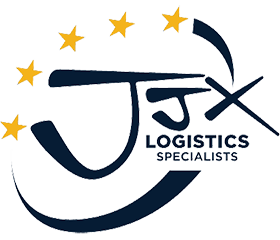Both intermodal and multimodal transportation involve moving cargo from origin to destination using more than one method of transport. This can be truck, rail, barge, ship, or any combination of those. Both can also mean that several different carriers operate each leg of the journey.
In multimodal transportation, one contract covers the entire journey. One carrier takes sole responsibility and ensures door-to-door delivery is completed, even if other carriers are used in the journey.
In intermodal transportation, there is a separate contract for each individual leg of the journey. This means that there is more than one responsibility entity for the successful delivery of the cargo.
When using a carrier for your cargo, make sure you understand the difference and communicate your needs properly to your providers to help alleviate any misunderstandings. So now we’ll look in a bit more detail at the difference between intermodal and multimodal shipping.
Multimodal Shipping
Multimodal is defined as the movement of cargo from origin to destination using several modes of transportation. In this instance, however, each mode is operated by a single carrier or multiple carriers, but under a single contract or bill of lading. A single carrier for a single journey. The same transport carrier is responsible for moving the shipment across all legs, in all modes.
The difference between multimodal and intermodal lies in the contract/ bill of lading and transport carrier responsibility/ liability of the movement.
If we look back to our examples above, multimodal shipping would be where one company, or one contract would handle all legs of the journey. This means that the same company is going to be responsible for moving your shipment in all legs, in all modes.
This can be set up in several ways. You could go with a company that has all these modes of transport available to them. Another way to set up a single contract for yourself is to use an agent. An agent would do all the negotiation on the back end for you while you only have once contract to keep track of. The agent would also be responsible for coordinating loading, unloading and delays.
Advantages
This method holds several advantages, the first being less overheads for you. Companies that handle multimodal shipping will be able to handle delays in one leg of the shipment in relation to the other legs without you needing to be involved. This method provides a one stop shop service, so every single aspect is handled by one provider, giving you ease and peace of mind.
Advantages of multimodal shipping are:
- Shipment tracking efficiency: being able to monitor with one transport carrier from door-to-door
- Access to remote parts of the world with responsibility and liability of the movement with one transport carrier
- Efficiency in delivery time
- Minimization of logistics coordination expenses of a shipper
Intermodal Shipping
Intermodal is defined as the movement of cargo from origin to destination using several modes of transportation. Each mode is operated by a different carrier, and each leg requires an independent contract. Multiple carriers for a single journey with each leg handled by a separate transport carrier.
The origin and destination are both land locked and on different continents. This could mean that your cargo needs to be moved by truck to a rail yard, by rail to the shipping port, and by vessel to the next port overseas. It will then be moved by rail from the shipyard to another rail yard, and then by truck from the railyard to the destination.
When using intermodal shipping, each leg of that shipment will be handled by a separate company and you will have several contracts, one with each carrier, to handle their specific leg of the shipment.
Advantages
These are some advantages to doing this, namely that you can negotiate terms separately with each company. This, however, means more overheads for you as you will need to keep track of several contracts with different providers. You may also be responsible for handling coordination of delays, as one company will not be aware of the delays that another company may be having.
Advantages of intermodal shipping are:
- Shippers can choose carriers to take advantage of lower rates for each transport leg
- Shippers gain flexibility and specialized handing of loading and unloading goods at different ports
- Shippers reduce their carbon footprint by choosing environmentally friendly carriers
- There is increased security of the products being transported
- Shippers have more access to equipment and can better control capacity and selection of transit schedules
The advantages of both intermodal and multimodal transportation are that they combine the most efficient transport modes. This optimises lead times, reduces inventory cost, and keeps the level of freight costs under control. It also results in increased environmental sustainability, reducing the transportation carbon footprint.
Regardless of your choice, be it intermodal or multimodal, you will require a transportation management system to ensure door-to-door tracking visibility. This will give you the ability to perform routing scenarios to determine the best overall total shipping cost with the best overall transit time. The transportation management system must have the capability to coordinate with and between transport carriers and suppliers, along with freight rates and contract management.
We're ready when you need us

